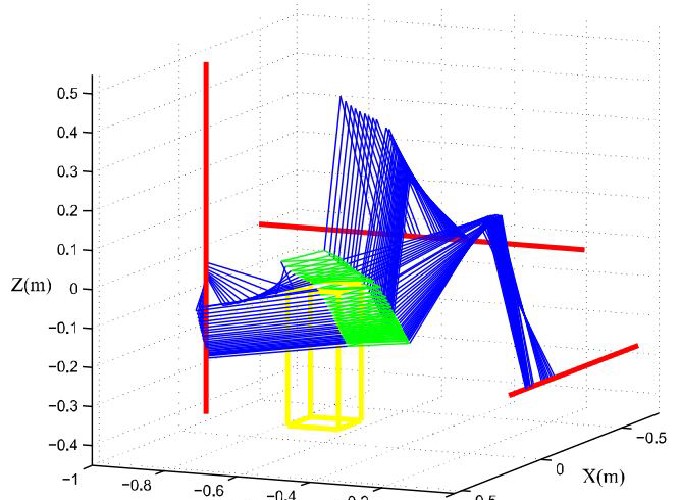Optimal Motion Planning for Parallel Robots Via Convex Optimization and Receding Horizon.
Abstract
In this paper, the problem of motion planning for parallel robots in the presence of static and dynamic obstacles has been investigated. The proposed algorithm can be regarded as a synergy of convex optimization with discrete optimization and receding horizon. This algorithm has several advantages, including absence of trapping in local optimums and a high computational speed. This problem has been fully analyzed for two three-DOF parallel robots, ie 3s-RPR parallel mechanism and the so-called Tripteron, while the shortest path is selected as the objective function. It should be noted that the first case study is a parallel mechanism with complex singularity loci expression from a convex optimization problem standpoint, while the second case is a parallel manipulator for which each limb has two links, an issue which increases the complexity of the optimization problem. Since some of the constraints are non-convex, two approaches are introduced in order to convexify them: (1) A McCormick-based relaxation merged with a branch-and-prune algorithm to prevent it from becoming too loose and (2) a first-order approximation which linearizes the non-convex quadratic constraints. The computational time for the approaches presented in this paper is considerably low, which will pave the way for online applications.
